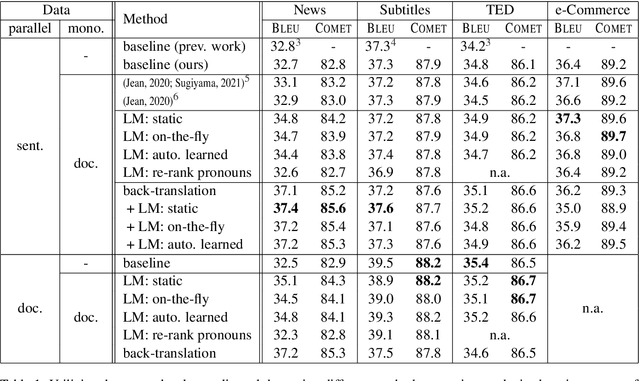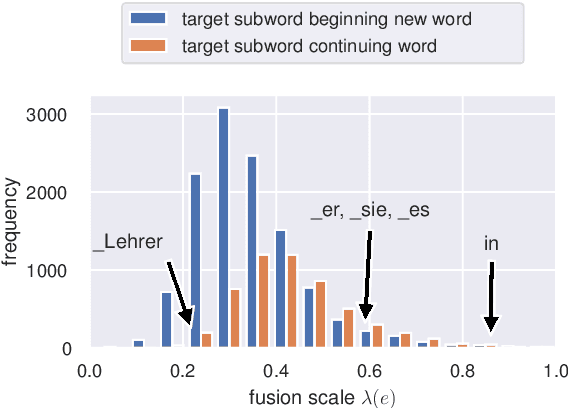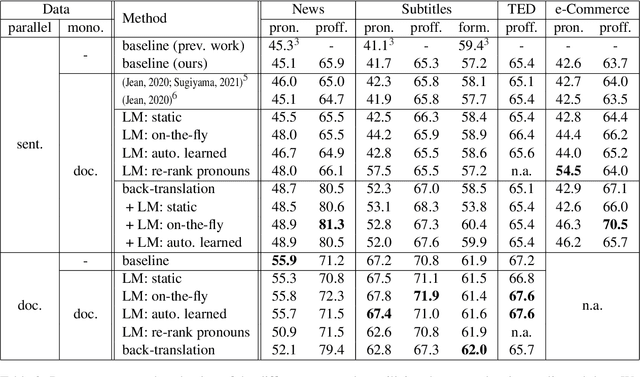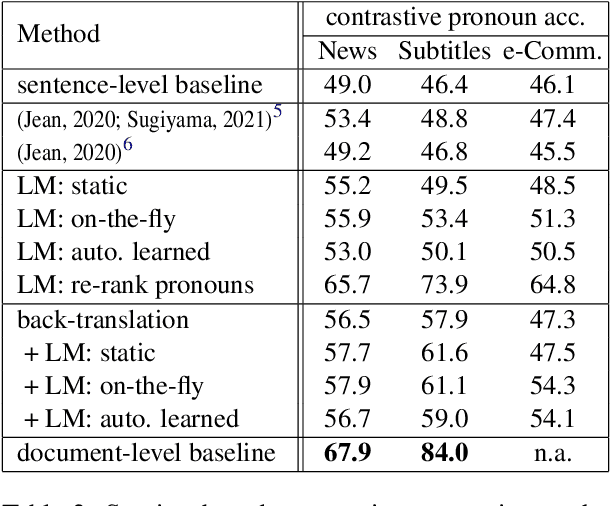Shahram Khadivi
Unilogit: Robust Machine Unlearning for LLMs Using Uniform-Target Self-Distillation
May 09, 2025



Abstract:This paper introduces Unilogit, a novel self-distillation method for machine unlearning in Large Language Models. Unilogit addresses the challenge of selectively forgetting specific information while maintaining overall model utility, a critical task in compliance with data privacy regulations like GDPR. Unlike prior methods that rely on static hyperparameters or starting model outputs, Unilogit dynamically adjusts target logits to achieve a uniform probability for the target token, leveraging the current model's outputs for more accurate self-distillation targets. This approach not only eliminates the need for additional hyperparameters but also enhances the model's ability to approximate the golden targets. Extensive experiments on public benchmarks and an in-house e-commerce dataset demonstrate Unilogit's superior performance in balancing forget and retain objectives, outperforming state-of-the-art methods such as NPO and UnDIAL. Our analysis further reveals Unilogit's robustness across various scenarios, highlighting its practical applicability and effectiveness in achieving efficacious machine unlearning.
CONGRAD:Conflicting Gradient Filtering for Multilingual Preference Alignment
Mar 31, 2025Abstract:Naive joint training of large language models (LLMs) for multilingual preference alignment can suffer from negative interference. This is a known issue in multilingual training, where conflicting objectives degrade overall performance. However, the impact of this phenomenon in the context of multilingual preference alignment remains largely underexplored. To address this issue, we propose CONGRAD, a scalable and effective filtering method that selects high-quality preference samples with minimal gradient conflicts across languages. Our method leverages gradient surgery to retain samples aligned with an aggregated multilingual update direction. Additionally, we incorporate a sublinear gradient compression strategy that reduces memory overhead during gradient accumulation. We integrate CONGRAD into self-rewarding framework and evaluate on LLaMA3-8B and Gemma2-2B across 10 languages. Results show that CONGRAD consistently outperforms strong baselines in both seen and unseen languages, with minimal alignment tax.
ClusComp: A Simple Paradigm for Model Compression and Efficient Finetuning
Mar 17, 2025



Abstract:As large language models (LLMs) scale, model compression is crucial for edge deployment and accessibility. Weight-only quantization reduces model size but suffers from performance degradation at lower bit widths. Moreover, standard finetuning is incompatible with quantized models, and alternative methods often fall short of full finetuning. In this paper, we propose ClusComp, a simple yet effective compression paradigm that clusters weight matrices into codebooks and finetunes them block-by-block. ClusComp (1) achieves superior performance in 2-4 bit quantization, (2) pushes compression to 1-bit while outperforming ultra-low-bit methods with minimal finetuning, and (3) enables efficient finetuning, even surpassing existing quantization-based approaches and rivaling full FP16 finetuning. Notably, ClusComp supports compression and finetuning of 70B LLMs on a single A6000-48GB GPU.
Domain Adaptation of Foundation LLMs for e-Commerce
Jan 16, 2025Abstract:We present the e-Llama models: 8 billion and 70 billion parameter large language models that are adapted towards the e-commerce domain. These models are meant as foundation models with deep knowledge about e-commerce, that form a base for instruction- and fine-tuning. The e-Llama models are obtained by continuously pretraining the Llama 3.1 base models on 1 trillion tokens of domain-specific data. We discuss our approach and motivate our choice of hyperparameters with a series of ablation studies. To quantify how well the models have been adapted to the e-commerce domain, we define and implement a set of multilingual, e-commerce specific evaluation tasks. We show that, when carefully choosing the training setup, the Llama 3.1 models can be adapted towards the new domain without sacrificing significant performance on general domain tasks. We also explore the possibility of merging the adapted model and the base model for a better control of the performance trade-off between domains.
IKUN for WMT24 General MT Task: LLMs Are here for Multilingual Machine Translation
Aug 21, 2024



Abstract:This paper introduces two multilingual systems, IKUN and IKUN-C, developed for the general machine translation task in WMT24. IKUN and IKUN-C represent an open system and a constrained system, respectively, built on Llama-3-8b and Mistral-7B-v0.3. Both systems are designed to handle all 11 language directions using a single model. According to automatic evaluation metrics, IKUN-C achieved 6 first-place and 3 second-place finishes among all constrained systems, while IKUN secured 1 first-place and 2 second-place finishes across both open and constrained systems. These encouraging results suggest that large language models (LLMs) are nearing the level of proficiency required for effective multilingual machine translation. The systems are based on a two-stage approach: first, continuous pre-training on monolingual data in 10 languages, followed by fine-tuning on high-quality parallel data for 11 language directions. The primary difference between IKUN and IKUN-C lies in their monolingual pre-training strategy. IKUN-C is pre-trained using constrained monolingual data, whereas IKUN leverages monolingual data from the OSCAR dataset. In the second phase, both systems are fine-tuned on parallel data sourced from NTREX, Flores, and WMT16-23 for all 11 language pairs.
LiLiuM: eBay's Large Language Models for e-commerce
Jun 17, 2024



Abstract:We introduce the LiLiuM series of large language models (LLMs): 1B, 7B, and 13B parameter models developed 100% in-house to fit eBay's specific needs in the e-commerce domain. This gives eBay full control over all aspects of the models including license, data, vocabulary, and architecture. We expect these models to be used as a foundation for fine-tuning and instruction-tuning, eliminating dependencies to external models. The LiLiuM LLMs have been trained on 3 trillion tokens of multilingual text from general and e-commerce domain. They perform similar to the popular LLaMA-2 models on English natural language understanding (NLU) benchmarks. At the same time, we outperform LLaMA-2 on non-English NLU tasks, machine translation and on e-commerce specific downstream tasks. As part of our data mixture, we utilize the newly released RedPajama-V2 dataset for training and share our insights regarding data filtering and deduplication. We also discuss in detail how to serialize structured data for use in autoregressive language modeling. We provide insights on the effects of including code and parallel machine translation data in pre-training. Furthermore, we develop our own tokenizer and model vocabulary, customized towards e-commerce. This way, we can achieve up to 34% speed-up in text generation on eBay-specific downstream tasks compared to LLaMA-2. Finally, in relation to LLM pretraining, we show that checkpoint averaging can further improve over the best individual model checkpoint.
ITEm: Unsupervised Image-Text Embedding Learning for eCommerce
Oct 22, 2023



Abstract:Product embedding serves as a cornerstone for a wide range of applications in eCommerce. The product embedding learned from multiple modalities shows significant improvement over that from a single modality, since different modalities provide complementary information. However, some modalities are more informatively dominant than others. How to teach a model to learn embedding from different modalities without neglecting information from the less dominant modality is challenging. We present an image-text embedding model (ITEm), an unsupervised learning method that is designed to better attend to image and text modalities. We extend BERT by (1) learning an embedding from text and image without knowing the regions of interest; (2) training a global representation to predict masked words and to construct masked image patches without their individual representations. We evaluate the pre-trained ITEm on two tasks: the search for extremely similar products and the prediction of product categories, showing substantial gains compared to strong baseline models.
Document-Level Language Models for Machine Translation
Oct 18, 2023



Abstract:Despite the known limitations, most machine translation systems today still operate on the sentence-level. One reason for this is, that most parallel training data is only sentence-level aligned, without document-level meta information available. In this work, we set out to build context-aware translation systems utilizing document-level monolingual data instead. This can be achieved by combining any existing sentence-level translation model with a document-level language model. We improve existing approaches by leveraging recent advancements in model combination. Additionally, we propose novel weighting techniques that make the system combination more flexible and significantly reduce computational overhead. In a comprehensive evaluation on four diverse translation tasks, we show that our extensions improve document-targeted scores substantially and are also computationally more efficient. However, we also find that in most scenarios, back-translation gives even better results, at the cost of having to re-train the translation system. Finally, we explore language model fusion in the light of recent advancements in large language models. Our findings suggest that there might be strong potential in utilizing large language models via model combination.
Active Continual Learning: Labelling Queries in a Sequence of Tasks
May 06, 2023



Abstract:Acquiring new knowledge without forgetting what has been learned in a sequence of tasks is the central focus of continual learning (CL). While tasks arrive sequentially, the training data are often prepared and annotated independently, leading to CL of incoming supervised learning tasks. This paper considers the under-explored problem of active continual learning (ACL) for a sequence of active learning (AL) tasks, where each incoming task includes a pool of unlabelled data and an annotation budget. We investigate the effectiveness and interplay between several AL and CL algorithms in the domain, class and task-incremental scenarios. Our experiments reveal the trade-off between two contrasting goals of not forgetting the old knowledge and the ability to quickly learn in CL and AL. While conditioning the query strategy on the annotations collected for the previous tasks leads to improved task performance on the domain and task incremental learning, our proposed forgetting-learning profile suggests a gap in balancing the effect of AL and CL for the class-incremental scenario.
Multi-armed bandits for online optimization of language model pre-training: the use case of dynamic masking
Mar 24, 2022



Abstract:Transformer-based language models (TLMs) provide state-of-the-art performance in many modern natural language processing applications. TLM training is conducted in two phases. First, the model is pre-trained over large volumes of text to minimize a generic objective function, such as the Masked Language Model (MLM). Second, the model is fine-tuned in specific downstream tasks. Pre-training requires large volumes of data and high computational resources, while introducing many still unresolved design choices. For instance, selecting hyperparameters for language model pre-training is often carried out based on heuristics or grid-based searches. In this work, we propose a multi-armed bandit-based online optimization framework for the sequential selection of pre-training hyperparameters to optimize language model performance. We pose the pre-training procedure as a sequential decision-making task, where at each pre-training step, an agent must determine what hyperparameters to use towards optimizing the pre-training objective. We propose a Thompson sampling bandit algorithm, based on a surrogate Gaussian process reward model of the MLM pre-training objective, for its sequential minimization. We empirically show how the proposed Gaussian process based Thompson sampling pre-trains robust and well-performing language models. Namely, by sequentially selecting masking hyperparameters of the TLM, we achieve satisfactory performance in less epochs, not only in terms of the pre-training MLM objective, but in diverse downstream fine-tuning tasks. The proposed bandit-based technique provides an automated hyperparameter selection method for pre-training TLMs of interest to practitioners. In addition, our results indicate that, instead of MLM pre-training with fixed masking probabilities, sequentially adapting the masking hyperparameters improves both pre-training loss and downstream task metrics.
 Add to Chrome
Add to Chrome Add to Firefox
Add to Firefox Add to Edge
Add to Edge